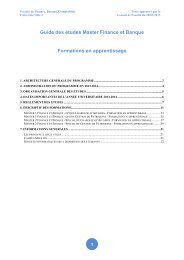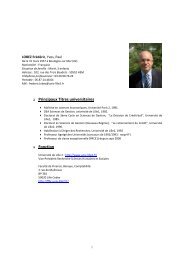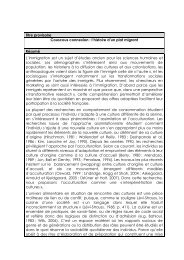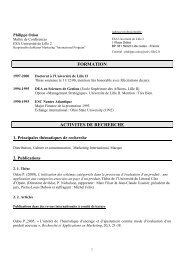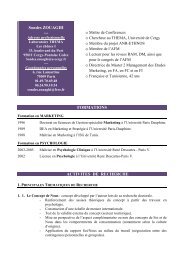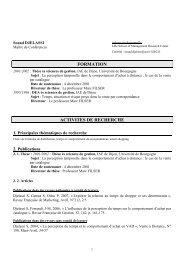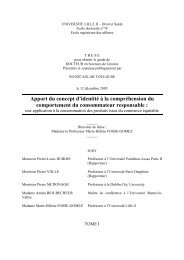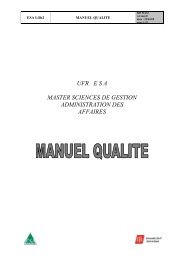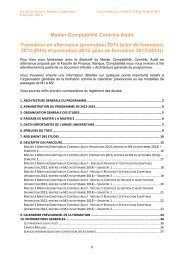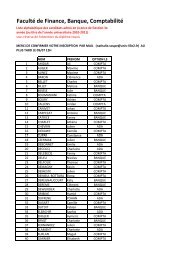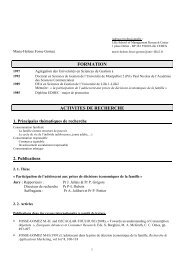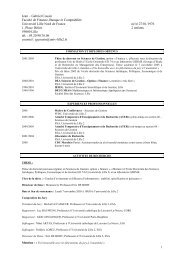Event Study
Event Study
Event Study
Create successful ePaper yourself
Turn your PDF publications into a flip-book with our unique Google optimized e-Paper software.
We propose to explore this issue in this paper. More precisely, we investigate whether, and to what extent,<br />
the increase in individual firm’s idiosyncratic volatility affects the power and specification of event<br />
studies. The question is important. If the power and specification of the tests are not stable through time<br />
and/or across geographical zones, it means that comparisons of results obtained from different time<br />
periods and/or geographical zones are potentially biased 3 . It would be like trying to compare the size of<br />
objects using a time varying measurement tool!<br />
We rely on both simulation and real data set analyses. First, we realize a simulation analysis following the<br />
procedure introduced by Brown and Warner (1980. 1985), in which our sample encompasses companies<br />
included in the CRSP daily returns file from 1 January 1976 to 31 December 2004. We simulate both<br />
deterministic and stochastic abnormal returns on the event date. Then, we perform event study analyses on<br />
a real data set of corporate events to check whether the significance tests are affected by a change in<br />
idiosyncratic volatility. The chosen event is a merger and acquisition (M&A) announcement. Our M&A<br />
sample contains 5,401 deals realized by US companies between 1980 and 2004. Our main results are:<br />
― While the specification of the event study is robust to the variation of the idiosyncratic volatility,<br />
we clearly confirm, as expected, a time-variation in the power over the long run. We provide<br />
evidence spanning the period 1976 to 2004 and using the main US stock markets (NYSE, Amex<br />
and Nasdaq). The effect appears to be significant. For example, using the market model and<br />
Boehmer et al.’s (1991) statistical test procedure on a sample of 50 firms, 1% simulated abnormal<br />
returns (with event-induced variance) are detected 74% of the time during the period 1976−1980,<br />
but only 51% of the time during the period 1996−2000.<br />
― We also show that the use of different return-generating models (the constant mean-return model,<br />
the beta-one model and the market model) and/or different statistical test procedures (Brown and<br />
3 Guo and Savickas (in press) show that the level of the average idiosyncratic volatility is different across<br />
geographical zones. For example, over the period 1973 to 2003, the average idiosyncratic volatilities in the UK and<br />
France are less than the half of that in the US.<br />
4



